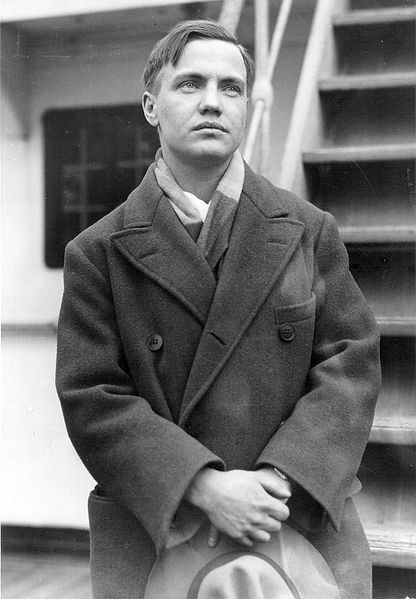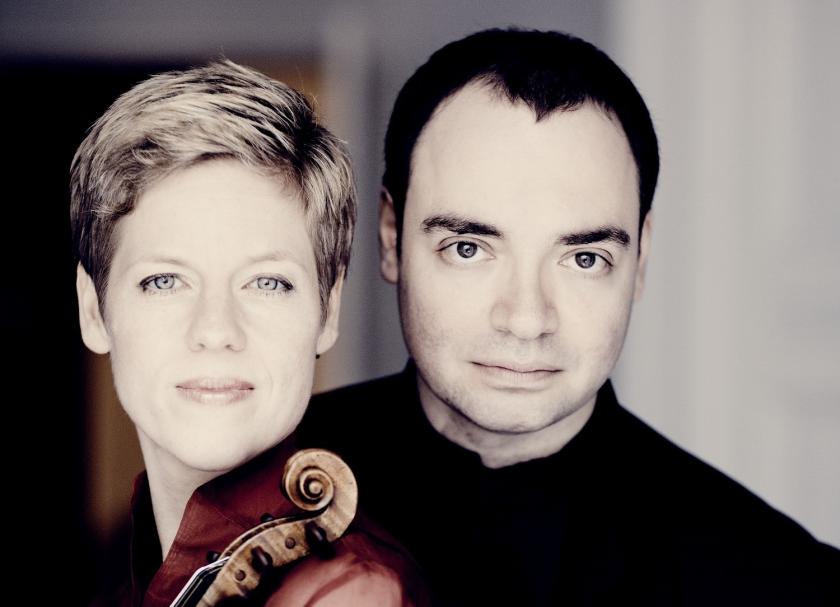Polish composer Szymanowski's Ovid triptych Mythes achieved something like cult status thanks to an iridescent recording. Everyone knew the pianist, the great Krystian Zimerman; the violinist, Kaja Danczowska, less so (where is she now?). A better-known duo of equals, Isabelle Faust and Alexander Melnikov, could – if crazes reached so far in the classical world these days – make listeners no less obsessed with two relative unknowns in the second half of their spellbinding programme, the 71-year-old Fauré's quietly radical Second Violin Sonata and George Antheil's 1923 anti-sonata for violin, piano and drum(s). A microphone suggested the concert will eventually be released on CD; I can't wait to get hold of a copy.
Even so, the live experience was unforgettable and all about evanescence. From the silver-age dreams of late romanticism to the bronze doors of a post-World-War-One asylum, Faust and Melnikov conjured multiple visions. The cliche "they played together as one" was never more justified. As Szymanowski's "Fountain of Arethusa" reached its peak, Faust threw the water-jet thrillingly high, and Melnikov caught it on the way down, with no apparent joins. The development of Fauré's 1877 A Major Sonata began with supernatural echoes and ineffable joint rubato; its slow movement's slow climb away from the dark was one of several out-of-body experiences in the concert.
The gags in Antheil's crazy collage are non-stop, ragtime and sentimental tunes all chucked together in just the right time-spanThe French master's two sonatas connected a programme of two halves. In the first, Faust's tone was always silvery in its focus, Melnikov's fabulous palette supplying the lower resonances. The second demanded tougher sounds, though never ugly ones. Jean Francaix's 1934 Sonatine served as intermezzo, with one wake-up call of chordal richness from Melnikov, poised in his weightiness as ever. But how to get to grips with the later Fauré work? In performance, you just succumb to the extraordinary journey of a soul, too resilient to succumb to anxiety as Faust's virtually non-stop role, despatched with steely confidence in the gorgeous long lines, pulled each movement to major-key triumph.
 Yet it's still uneasy, and quite unlike anything else in the repertoire other than some of Fauré's other late-period masterpieces. Much as I missed another of the composer's scintillating scherzos – the one in the A major Sonata is as delicious as any, ushering in another miraculous dialogue between these extraordinary artists – it would have been out of place in the terrifying fixity of the E minor work.
Yet it's still uneasy, and quite unlike anything else in the repertoire other than some of Fauré's other late-period masterpieces. Much as I missed another of the composer's scintillating scherzos – the one in the A major Sonata is as delicious as any, ushering in another miraculous dialogue between these extraordinary artists – it would have been out of place in the terrifying fixity of the E minor work.
Szymanowski's pipes of Pan in his third "Myth" occasioned a necessary trick from Faust, playing her unaccompanied harmonics into the piano strings. The gags in Antheil's crazy collage (the composer in 1923, pictured right) are non-stop, ragtime and sentimental tunes all chucked together in just the right time-span; before you have a chance to get tired of the joke, the piano launches into a colossal low-register quasi-cadenza. Melnikov's roaring Prokofiev manner – hear his new disc of that composer's sonatas, it's the best ever – cut off as he took up a drum to steer Faust's now-impersonal, fluting violin in the most audacious of codas.
If you longed for a return to sustained legato, the two offered it in the most ineffable form possible as encore – Schumann's elliptical Intermezzo from the composite F-A-E Sonata. Bizarrely, the concert wasn't a sell-out, but the many young violinists bearing their instruments knew that they were probably in for an evening of perfection, and so it transpired.















Add comment